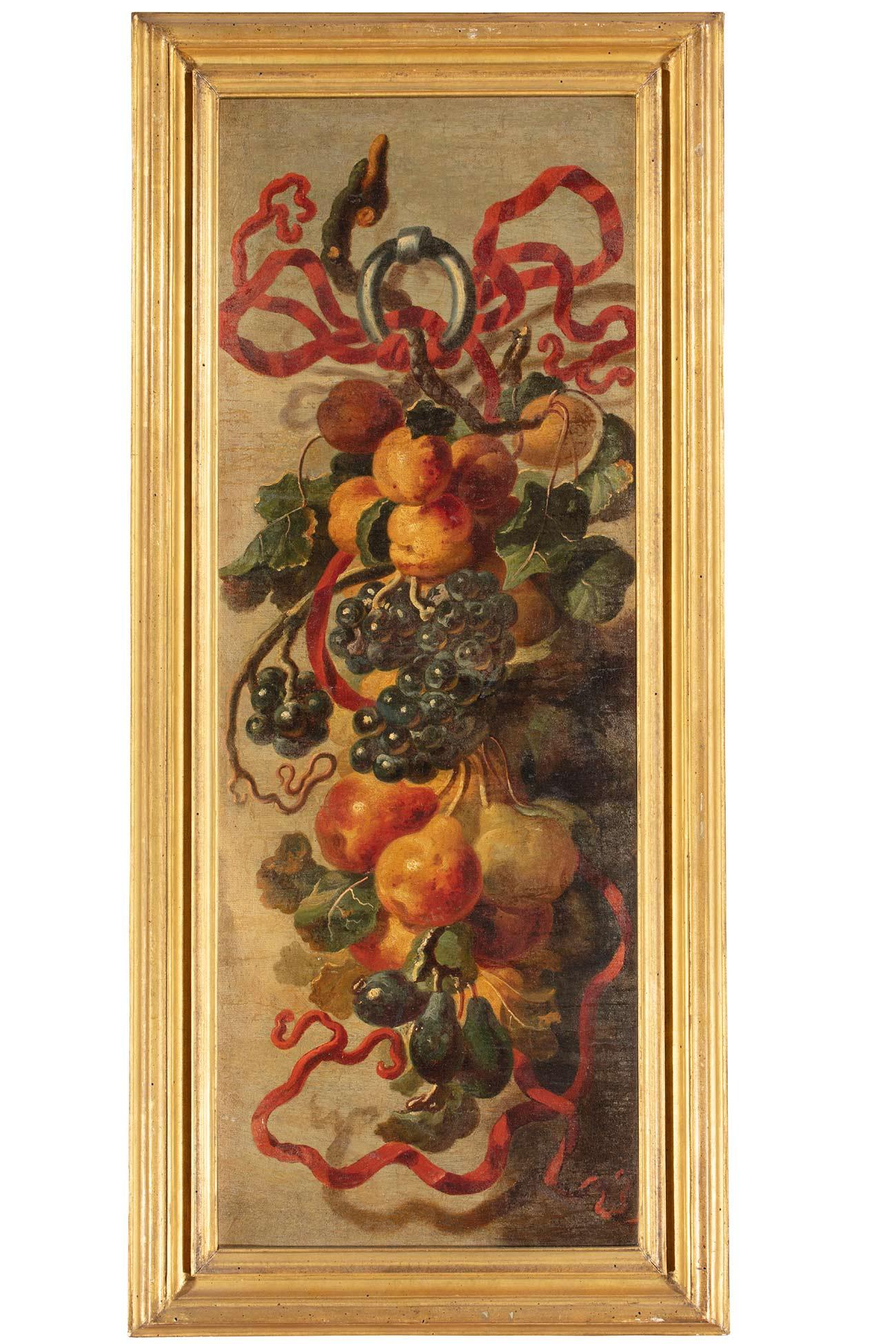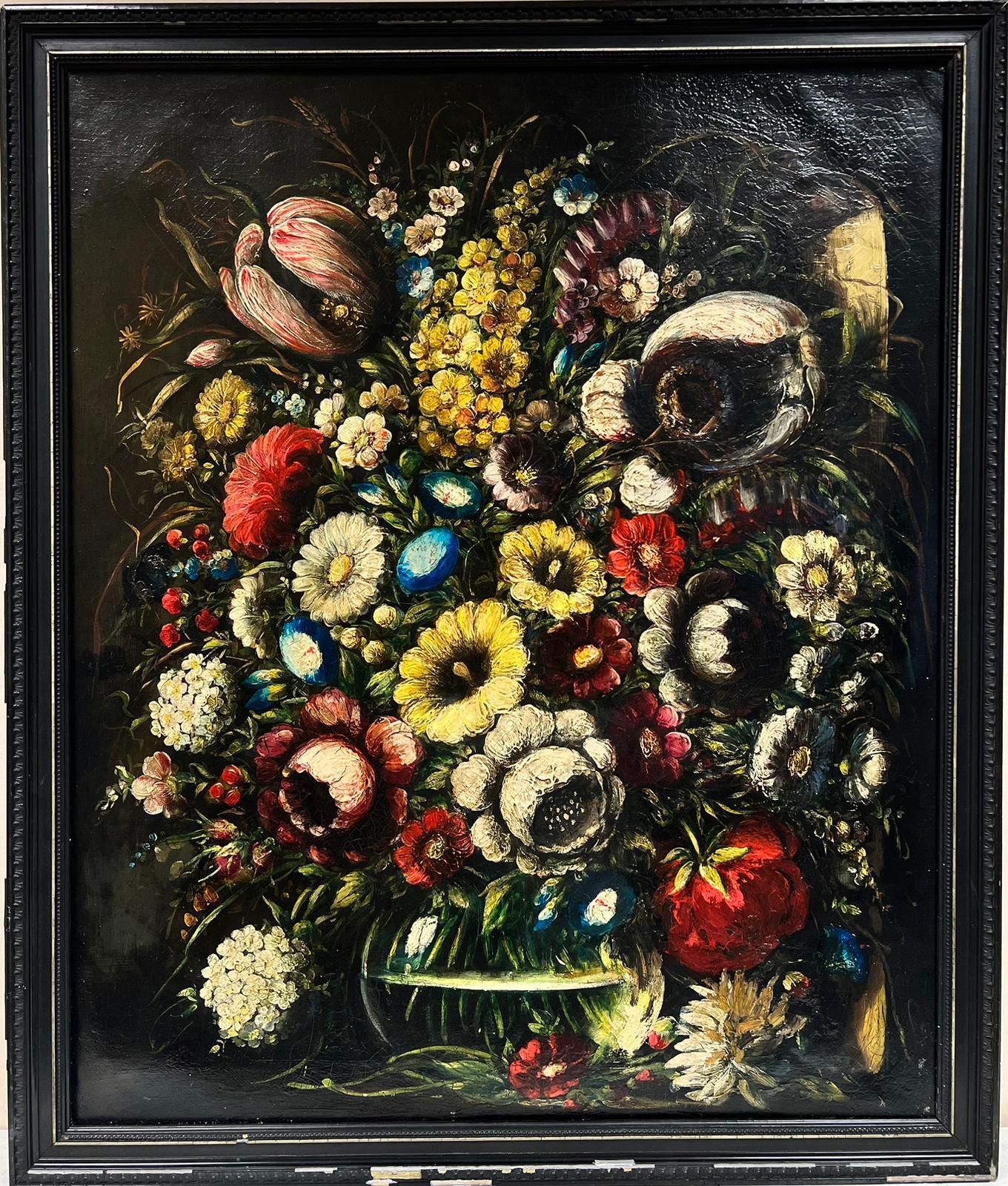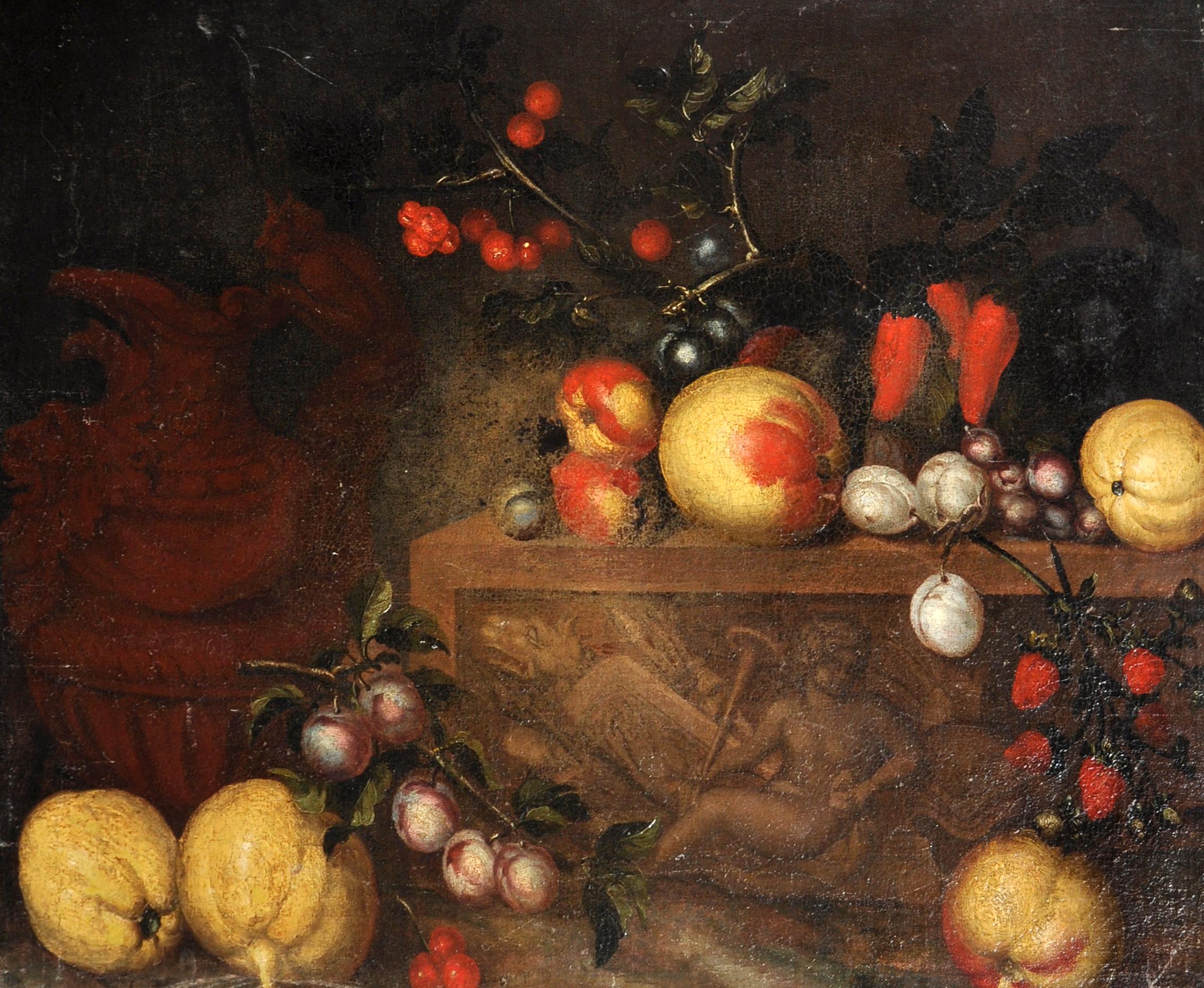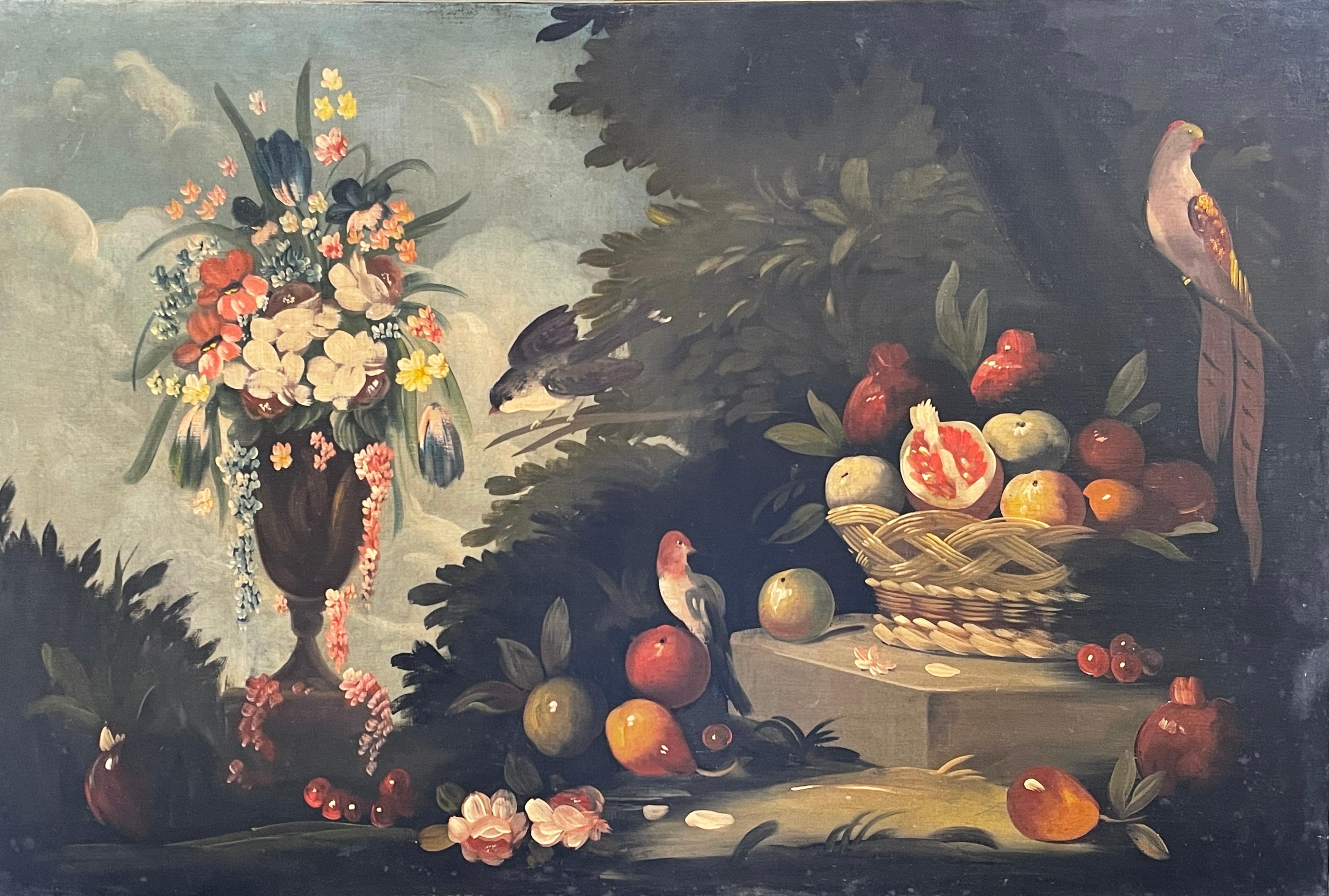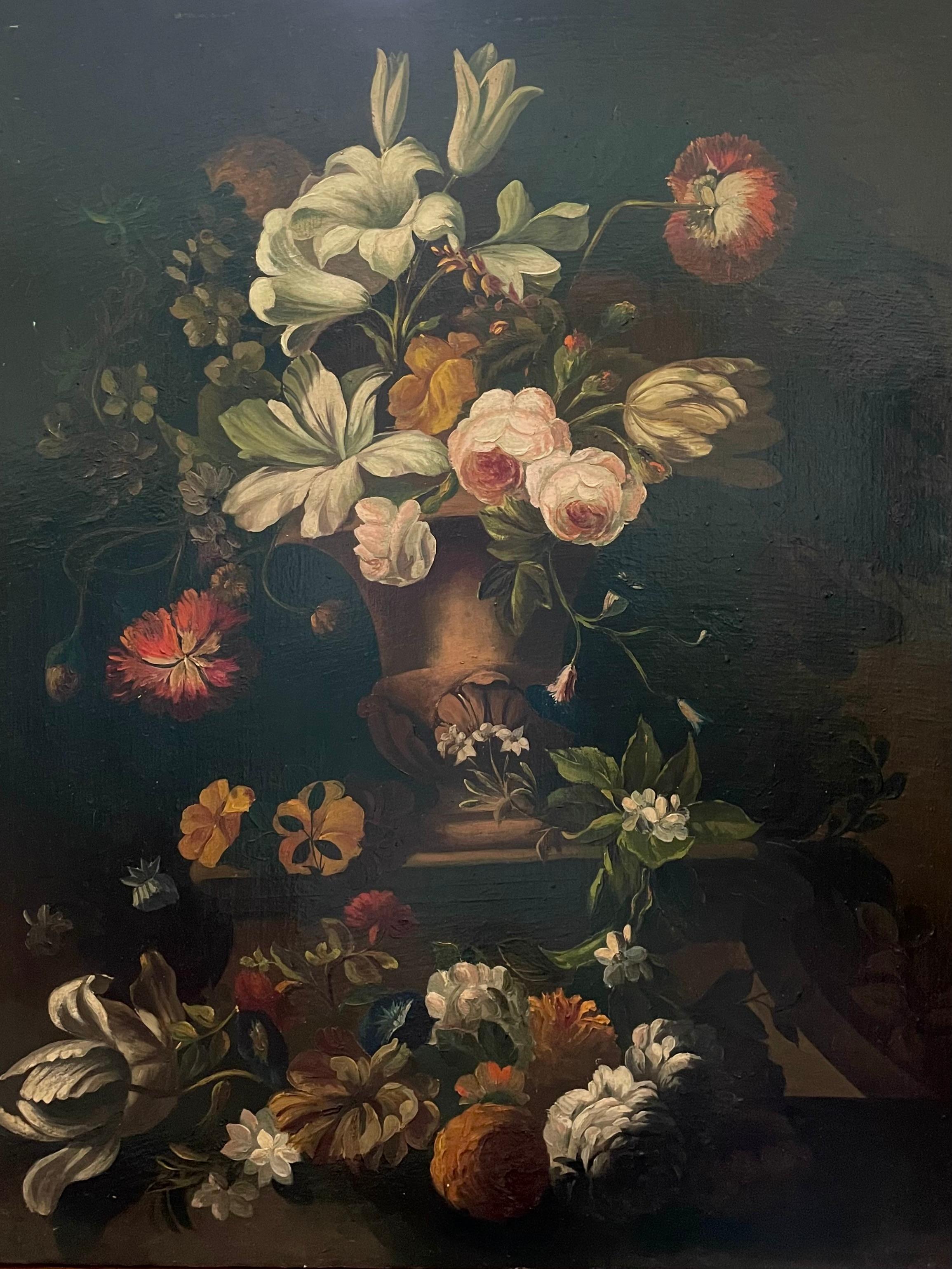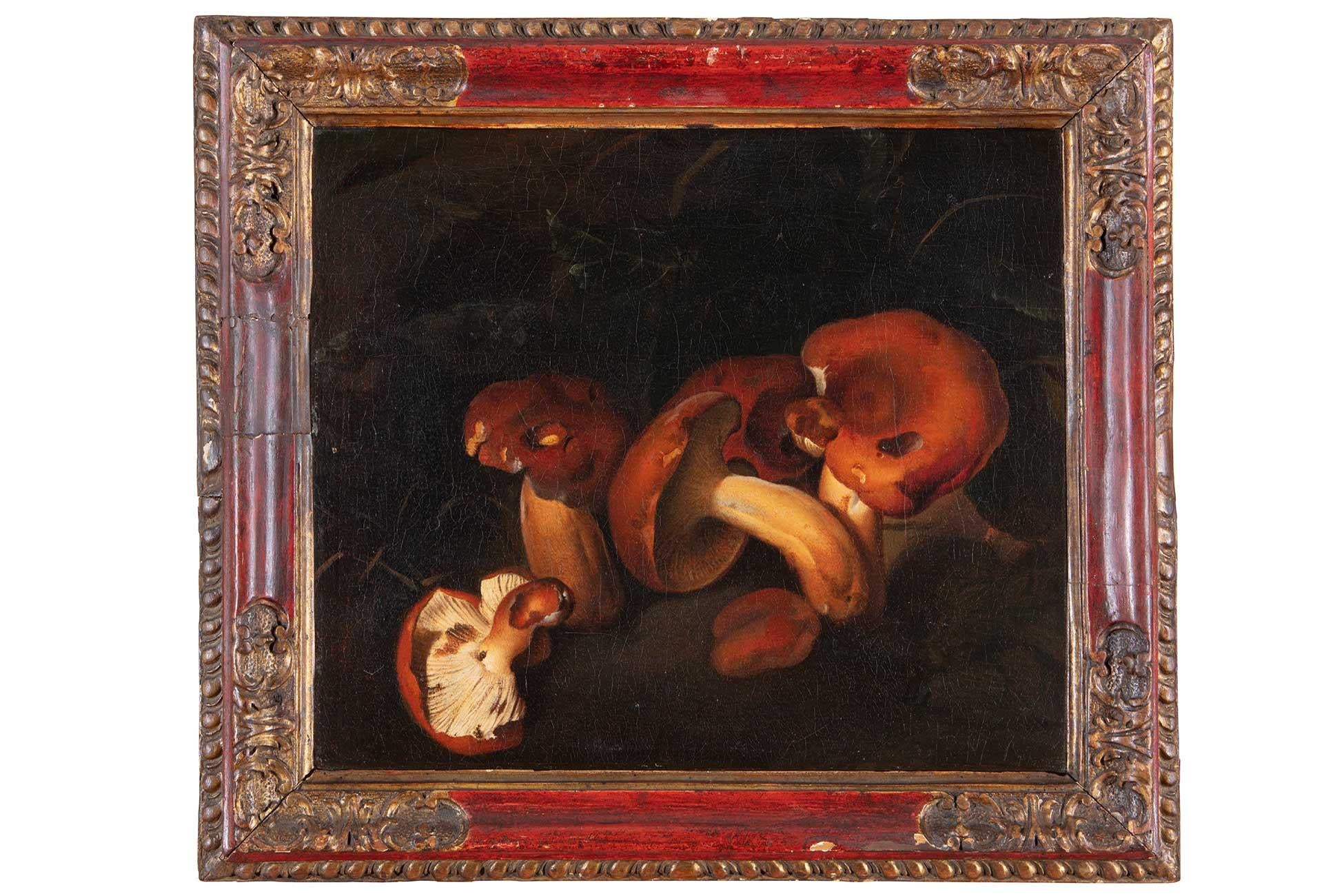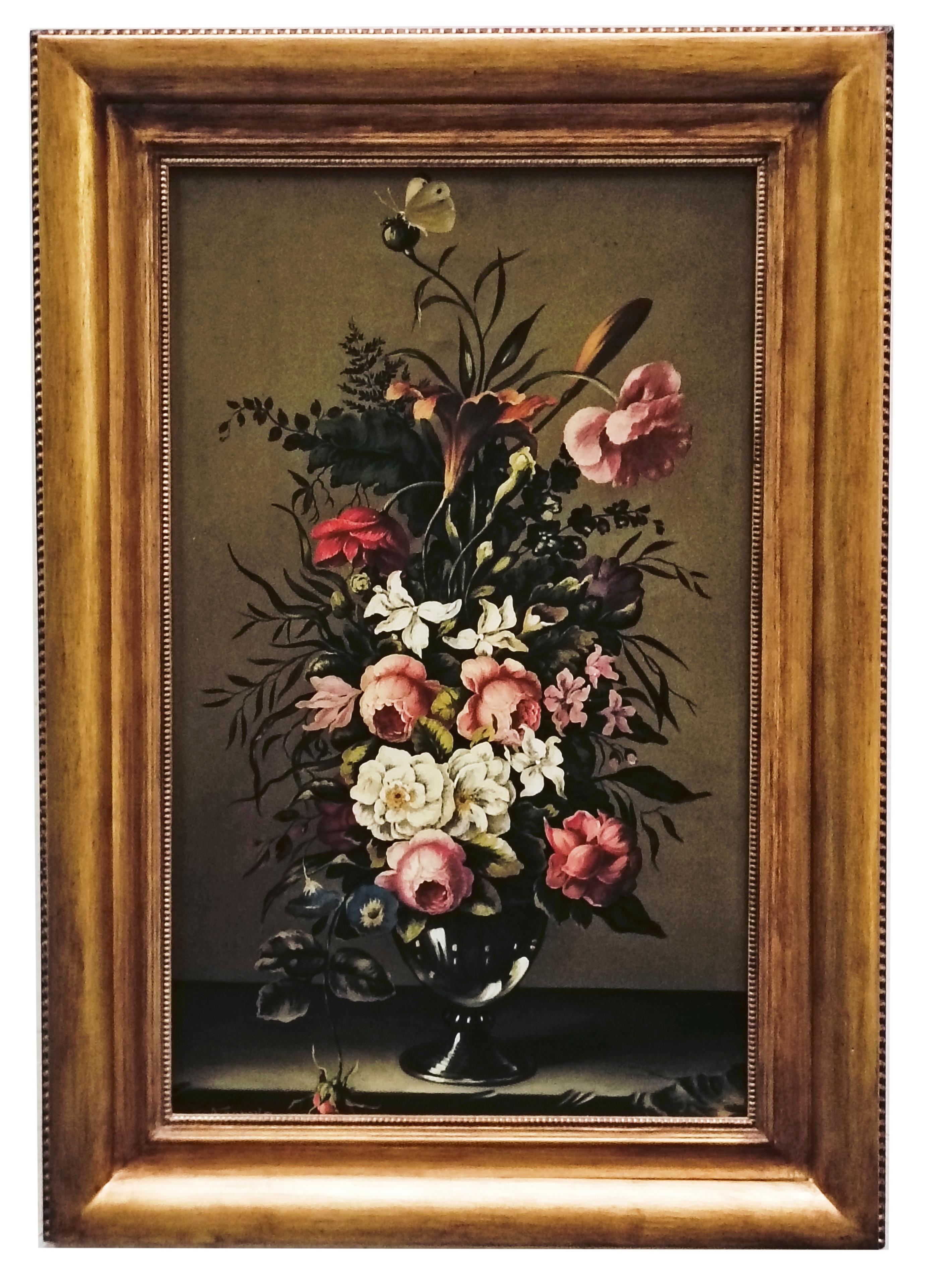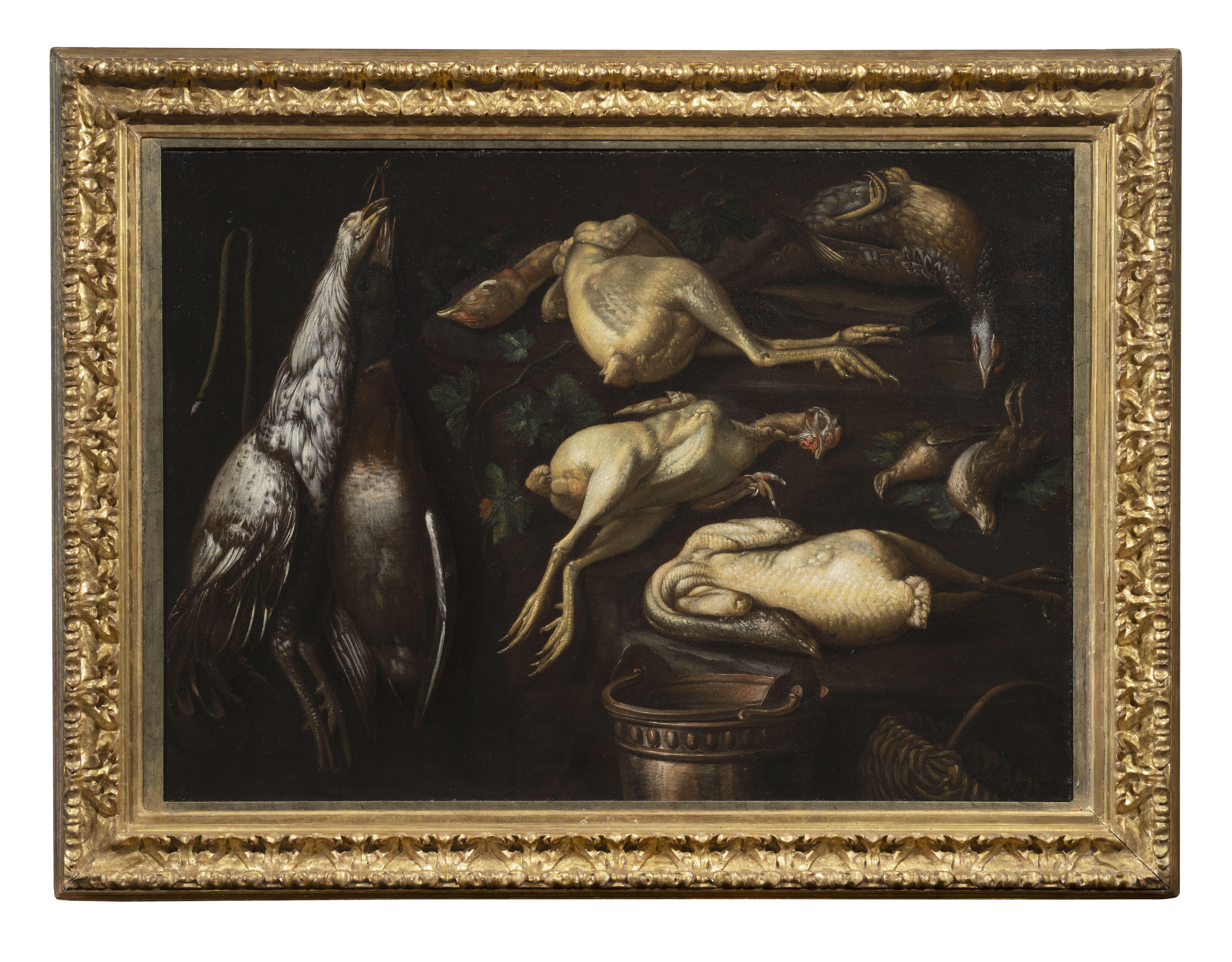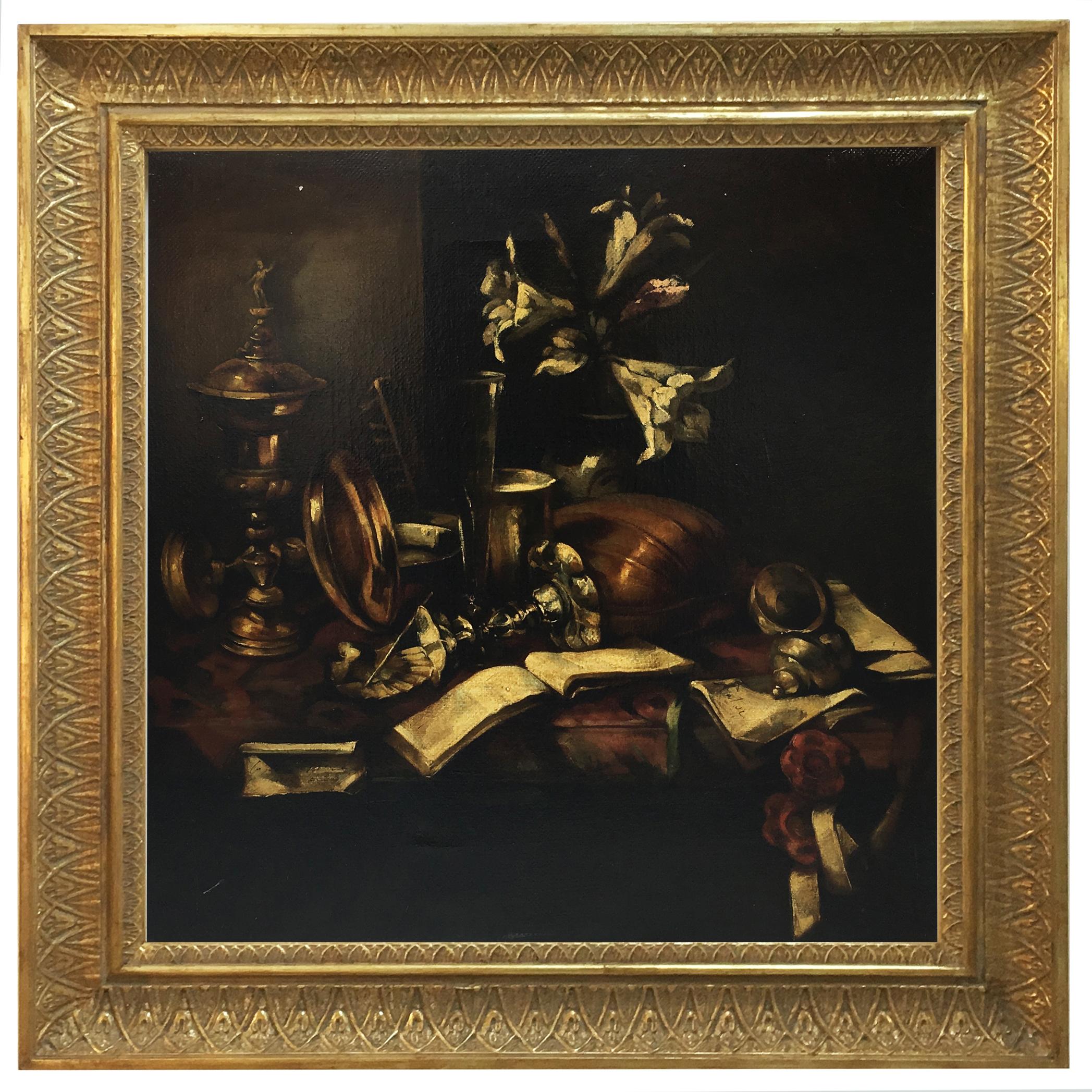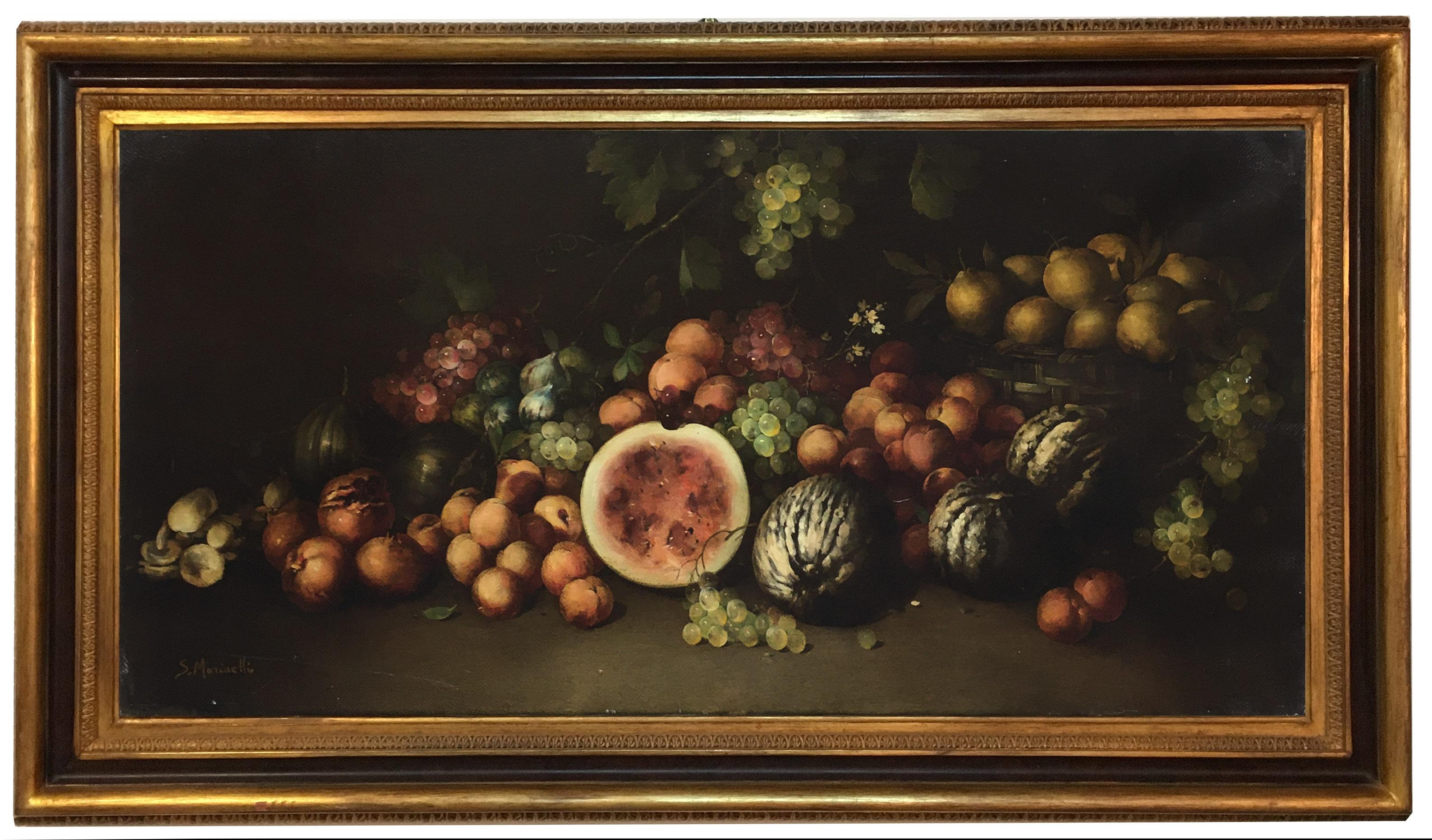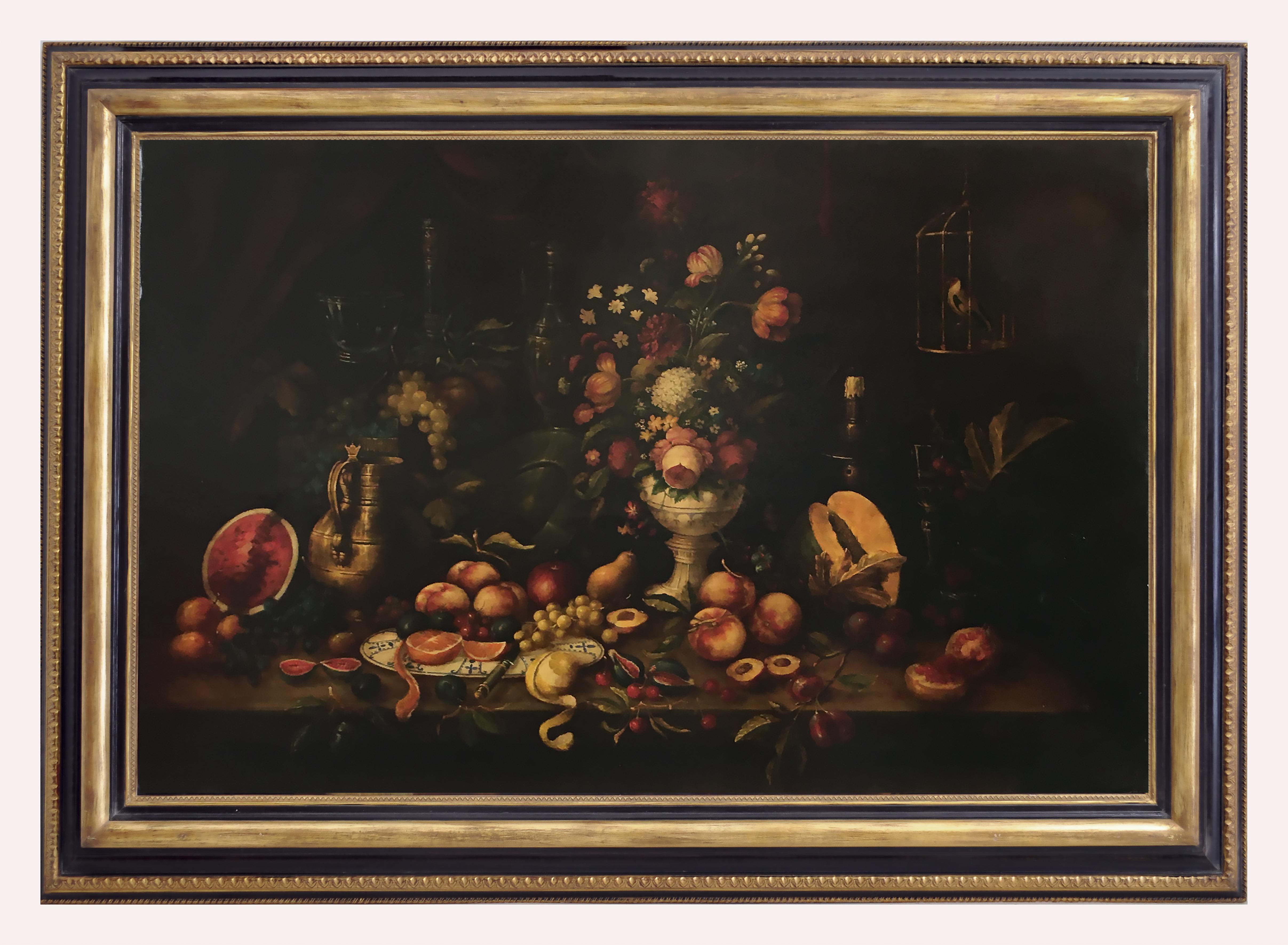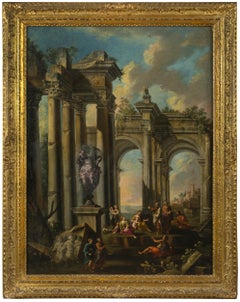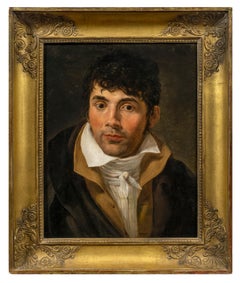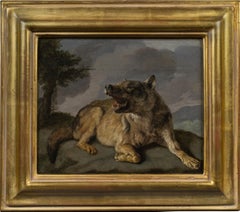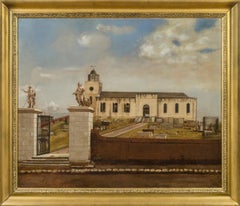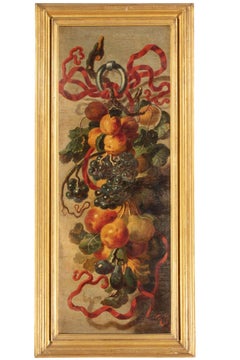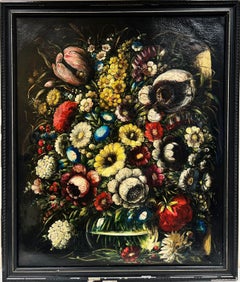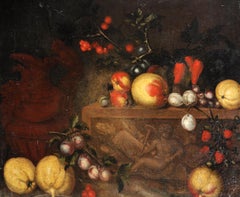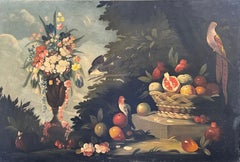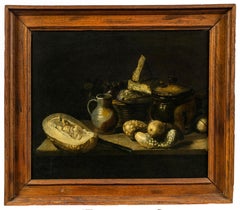
Still Life with Squash, Gourds, Stoneware, and a Basket with Fruit and Cheese
View Similar Items
Want more images or videos?
Request additional images or videos from the seller
1 of 5
Still Life with Squash, Gourds, Stoneware, and a Basket with Fruit and Cheese
About the Item
- Dimensions:Height: 20.5 in (52.07 cm)Width: 24.5 in (62.23 cm)
- Medium:
- Movement & Style:
- Circle Of:Juan Sanchez Cotan (1560 - 1627, Spanish)
- Period:
- Condition:
- Gallery Location:New York, NY
- Reference Number:1stDibs: LU1027909252
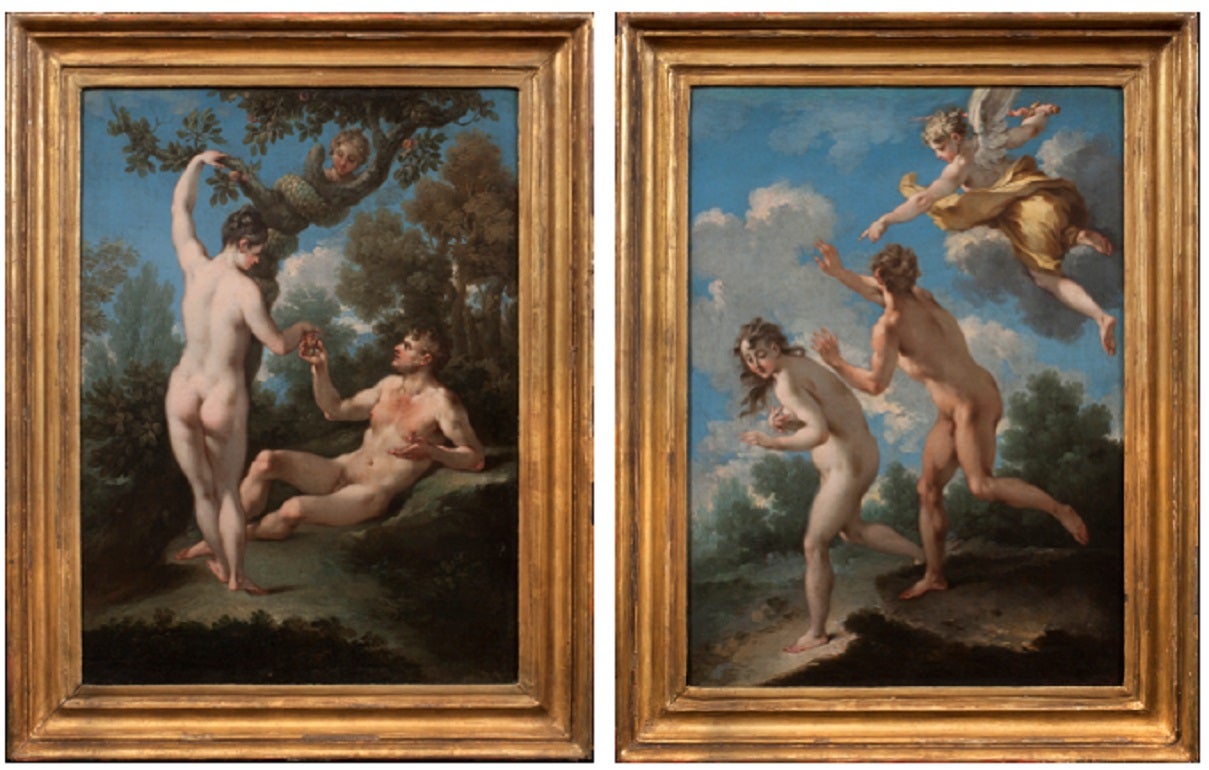
About the Seller
5.0
Recognized Seller
These prestigious sellers are industry leaders and represent the highest echelon for item quality and design.
Established in 1997
1stDibs seller since 2012
19 sales on 1stDibs
Typical response time: 12 hours
Authenticity Guarantee
In the unlikely event there’s an issue with an item’s authenticity, contact us within 1 year for a full refund. DetailsMoney-Back Guarantee
If your item is not as described, is damaged in transit, or does not arrive, contact us within 7 days for a full refund. Details24-Hour Cancellation
You have a 24-hour grace period in which to reconsider your purchase, with no questions asked.Vetted Professional Sellers
Our world-class sellers must adhere to strict standards for service and quality, maintaining the integrity of our listings.Price-Match Guarantee
If you find that a seller listed the same item for a lower price elsewhere, we’ll match it.Trusted Global Delivery
Our best-in-class carrier network provides specialized shipping options worldwide, including custom delivery.More From This Seller
View AllAn Architectural Capriccio with the Preaching of an Apostle
By Giovanni Paolo Panini
Located in New York, NY
Provenance: Santambrogio Antichità, Milan; sold, 2007 to:
Filippo Pernisa, Milan; by whom sold, 2010, to:
Private Collection, Melide, Switzerland
De Primi Fine Art, Lugano, Switzerland; from whom acquired, 2011 by:
Private Collection, Connecticut (2011-present)
Literature: Ferdinando Arisi, “Ancora sui dipinti giovanili del Panini,” Strenna Piacentina (Piacenza, 2009): pp. 48, 57, 65, fig. 31, as by Panini
Ferdinando Arisi, “Panini o Ghisolfi o Carlieri? A proposito dei dipinti giovanili,” Strenna Piacentina, (Piacenza, 2010), pp. 100, 105, 116, fig. 101, as an early work by Panini, a variant of Panini’s painting in the Museo Cristiano, Esztergom, Hungary.
This architectural capriccio is one of the earliest paintings by Giovanni Paolo Panini, the preeminent painter of vedute and capricci in 18th-century Rome. The attribution to Panini has been endorsed by Ferdinando Arisi, and a recent cleaning of the painting revealed the artist’s signature in the lower right. Like many of his fellow painters working in Rome during his day, Panini was not a native of the Eternal City. He first trained as a painter and stage designer in his hometown of Piacenza and moved to Rome at the age of 20 in November 1711 to study figure painting. Panini joined the workshop of Benedetto Luti (1666-1724) and from 1712 was living on the Piazza Farnese. Panini, like many before and after him, was spellbound by Rome and its classical past. He remained in the city for the rest of his career, specializing in depicting Rome’s most important monuments, as well as creating picturesque scenes like this one that evoked the city’s ancient splendor.
The 18th century art historian Lione Pascoli, who likely knew Panini personally, records in his 1730 biography of the artist that when Panini came to Rome, he was already “an excellent master and a distinguished painter of perspective, landscape, and architecture.” Panini’s earliest works from this period still show the evidence of his artistic formation in Piacenza, especially the influence of the view painter Giovanni Ghisolfi (1623-1683). However, they were also clearly shaped by his contact in Rome with the architectural capricci of Alberto Carlieri...
Category
18th Century Old Masters Figurative Paintings
Materials
Canvas, Oil
Portrait of a Gentleman
Located in New York, NY
Circle of Jacques-Louis David
(French, 18th Century)
Provenance:
Private Collection, Buenos Aires
Exhibited:
“Art of Collecting,” Flint Institute of Art, Flint, Michigan, 23 November 2018 – 6 January 2019.
This vibrant portrait of young man was traditionally considered a work by Jacques-Louis David, whose style it recalls, but to whom it cannot be convincingly attributed. Rather, it would appear to be by a painter in his immediate following—an artist likely working in France in the first decade of the nineteenth century. Several names have been proposed as the portrait’s author: François Gérard, Louis Hersent, Anne-Louis Girodet (Fig. 1), Theodore Gericault, and Jean-Baptiste Wicar, among others. Some have thought the artist Italian, and have proposed Andrea Appiani, Gaspare Landi...
Category
18th Century Old Masters Paintings
Materials
Canvas, Oil
$45,000
A Wolf
Located in New York, NY
Provenance:
The Marchesi Strozzi, Palazzo Strozzi, Florence
Sale, Christie’s, London, May 20, 1993, lot 315, as by Carl Borromaus Andreas Ruthart...
Category
17th Century Old Masters Animal Paintings
Materials
Paper, Canvas, Oil
View of St. John’s Cathedral, Antigua
Located in New York, NY
Provenance:
Robert Hollberton, Antigua, ca. 1841
Private Collection, New York
The present painting depicts Old St. John’s Cathedral on the island of Antigua. The church was erected in the 1720s on the designs of the architect Robert Cullen. It measured 130 feet by 50 feet with north and south porches 23 x 20 ½ feet. The tower, 50 feet high with its cupola, was added in 1789. The church was elevated to the status of a cathedral, but disaster struck in the form of an earthquake that destroyed the building on 8 February 1843. A memorandum of that date relates the event:
“On Wednesday, 8th February, 1843, this island was visited by a most terrific and destructive earthquake. At twenty minutes before eleven o’clock in the forenoon, while the bell was ringing for prayers, and the venerable Robert Holberton was in the vestry-room, awaiting the arrival of persons to have their marriage solemnized, before the commencement of the morning service, the whole edifice, from one end to the other, was suddenly and violently agitated. Every one within the church, after the first shock, was compelled to escape for his life. The tower was rent from the top to the bottom; the north dial of the clock precipitated to the ground with a dreadful crash; the east parapet wall of the tower thrown upon the roof of the church; almost the whole of the north-west wall by the north gallery fell out in a mass; the north-east wall was protruded beyond the perpendicular; the altar-piece, the public monument erected to the memory of lord Lavington, and the private monuments, hearing the names of Kelsick, Warner, Otley, and Atkinson, fell down piecemeal inside; a large portion of the top of the east wall fell, and the whole of the south-east wall was precipitated into the churchyard, carrying along with it two of the cast-iron windows, while the other six remained projecting from the walls in which they had been originally inserted; a large pile of heavy cut stones and masses of brick fell down at the south and at the north doors; seven of the large frontpipes of the organ were thrown out by the violence of the shock, and many of the metal and wooden pipes within displaced; the massive basin of the font was tossed from the pedestal on which it rested, and pitched upon the pavement beneath uninjured. Thus, within the space of three minutes, this church was reduced to a pile of crumbling ruins; the walls that were left standing being rent in every part, the main roof only remaining sound, being supported by the hard wood pillars.”
The entrance from the southern side into the cathedral, which was erected in 1789, included two imposing statues, one of Saint John the Divine and the other of Saint John the Baptist in flowing robes. It is said that these statues were confiscated by the British Navy from the French ship HMS Temple in Martinique waters in 1756 during the Seven Years’ War and moved to the church. The statues are still in situ and can be seen today, much as they appeared in Bisbee’s painting, but with the new cathedral in the background (Fig. 1).
Little is known of the career of Ezra Bisbee. He was born in Sag Harbor, New York in 1808 and appears to have had a career as a political cartoonist and a printmaker. His handsome Portrait of President Andrew Jackson is dated 1833, and several political lithographs...
Category
19th Century Old Masters Landscape Paintings
Materials
Canvas, Oil
Holy Family with the Infant St. John the Baptist
Located in New York, NY
Lubin Baugin
(Pithiviers 1610 – 1663 Paris)
Holy Family with the Infant Saint John the Baptist
Oil on canvas
22 x 42 ¼ inches (55.9 x 107.3 cm)
Provenance:
Marcello and Carlo ...
Category
17th Century Old Masters Figurative Paintings
Materials
Canvas, Oil
Head of the Virgin
Located in New York, NY
Provenance: Private Collection, Paraguay.
This unpublished Head of the Virgin is a new addition to the rich corpus of paintings by Giovanni Battista Tiepolo. While the artist freque...
Category
18th Century Old Masters Figurative Paintings
Materials
Oil, Canvas
You May Also Like
17th Century by Giovanni Paolo Castelli Still Life Oil on Canvas
By Giovanni Paolo Castelli detto Spadino
Located in Milano, Lombardia
Giovanni Paolo Castelli known as Spadino (Rome, Italy, 1659 - 1730)
Title: Still life
Medium: Oil on canvas
Dimensions: without frame 81 x 31 ...
Category
Late 17th Century Old Masters Still-life Paintings
Materials
Canvas, Oil, Cotton Canvas
Classical Still Life Flowers in Glass Bowl, Old Master Style oil on canvas
By German School
Located in Cirencester, Gloucestershire
German School, early 20th century
oil on canvas, framed
framed: 33 x 27.5 inches
canvas: 30 x 25 inches
private collection, UK
the painting is in overall very ...
Category
Early 20th Century Old Masters Still-life Paintings
Materials
Canvas, Oil
17th Century Italian School Still Life of Fruit on a Marble Ledge with a Ewer
Located in Cirencester, Gloucestershire
17th Century Italian School.
A Still Life of Fruit on a Marble Ledge, with a Ewer to the side,
Oil on Canvas, Unframed,
22" x 26.5" (56 x 67.3cm).
Con...
Category
17th Century Old Masters Still-life Paintings
Materials
Oil, Canvas
Huge 19th Century Italian Classical Still Life Ornamental Birds Fruit & Flowers
Located in Cirencester, Gloucestershire
Ornamental Still Life with fruit, flowers and birds
Italian School, 19th century
oil painting on canvas, unframed
size: 31.5 x 47 inches
condition: relined canvas and in very good and presentable condition
provenance: from a collection here in England.
A very beautiful and decorative oil painting on a huge scale, depicting this classical landscape scene, with ornamental birds...
Category
19th Century Old Masters Landscape Paintings
Materials
Oil, Canvas
STILL LIFE - Massimo Reggiani - Oil on Canvas Italian Painting
By Massimo Reggiani
Located in Napoli, IT
STILL LIFE - Oil on canvas cm. 40x50 by Massimo Reggiani, Italy 2005
Still life, a pictorial representation of foodstuffs, objects or inanimate objects, was one of the artistic genres that became completely independent in the seventeenth century. Reggiani has composed this still life inspired by the Dutch school. Fruit, grapes and peaches...
Category
21st Century and Contemporary Old Masters Still-life Paintings
Materials
Canvas, Oil
Florals in classic urn Old Masters 17th century Dutch style
Located in Hillsborough, NC
Floral with Urn is in a classical Dutch style that dates to the 17th century. The bright flowers drape the urn in whites, crimsons and pinks, standing out against the darker foliage and flowers on a dark background.
The artist is unknown and the age is unknown, but the beauty is unmistakable.
Oil on canvas, the petals stand out with brushstrokes heavy with paint. The background paint is rough. In the 17th century paint was mixed with gesso or chalk, with particles forming an uneven surface. This background is in the same style in shades of black and brown.
THe painting presents well on canvas stretched over an aged wooden stretcher.
The painting has been restored and relined at some point, obscuring the back of the original canvas. The flower colors remain bright. Canvas sight is 30" wide and 50" high. There is no frame. There are small nicks and wear consistent with age.
The precise date is unknown but aspects of the work suggest a date later than 19th century, and possibly 17th century that is more typical of this style. Dutch flower still life painting...
Category
17th Century Old Masters Still-life Paintings
Materials
Canvas, Oil
Recently Viewed
View AllMore Ways To Browse
Three Wooden Head Painted
Warhol Campbell Soup Print
A Home For Aged Hebrews
Alexander Calder 1971
Daphne Sculpture
Donald Beacher
Etchings Of Sheep
Guinness Original
Henri Matisse 1941
Holy Trinity
International Orleans Silver
L Appel
Lithograph Of Central Park
Midcentury Pop Art Wall Sculpture
Native American Chief Paintings
Oil Late 1800s
Pablo Picasso Nude Lithograph
Peter Max 1970
